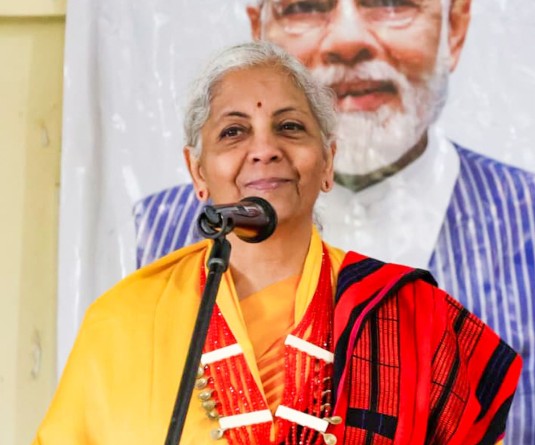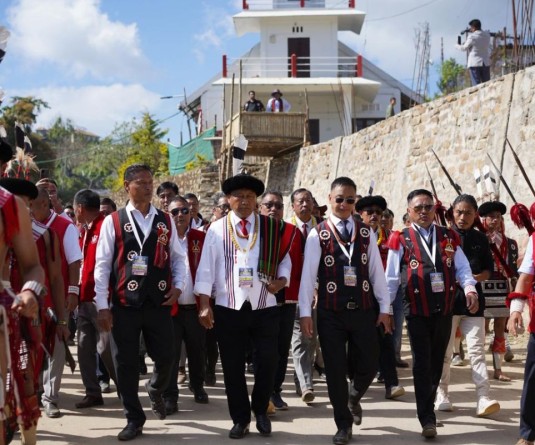
Morung Express News
Kohima | February 6
The Nagaland Heritage Studies textbook for Class I to V developed by the State Council Research and Training (SCERT) Nagaland was released on February 6 at the SCERT office, Kohima. Released by Governor of Nagaland PB Acharya, the textbooks have been translated in 18 Naga languages which will replace alternative English in all the schools, both private and government, in Nagaland.
“Recognizing the need to preserve and introduce local languages in schools, the government has constituted committee and based on the recommendation of that committee, it has been decided to introduce local languages in all our schools and replace alternative English upto class 8 from this year,” informed F.P Solo, Principal Secretary, School Education & SCERT, expressing hope that through the introduction of the Nagaland Heritage Studies, the local languages can be inculcated in all the schools and help preserve, promote and protect the local language .
Providing a brief report of the project which began in 2015, T. Sekhose, Director, SCERT, stated that for a very long time the SCERT has recognized the fact that as a department it has not been able to tap into the richness of our culture. Despite the inclusion of heritage studies in previous textbooks, Sekhose viewed that the institute could not do justice to it.
“We came to the conclusion that the vernacular textbooks will be an ideal platform for us to further learning of our own culture,” said Sekhose adding that in partnership with school Education, over fifty workshops were held. The team further worked on collecting stories of culture, involving the apex tribal organizations and various tribal literature committee.
90 individual titles covering classes I to V in all 17 dialects including the Rengma sub-dialect Nthenyi and an English Nagaland Heritage Studies (Class V) to replace Alternative English was released today. Sekhose expressed hope that the entire series covering the entire elementary stage that is Class 6,7,8 will be completed this year.
The 17 dialects include Chokri, Kuki, Yimchungrü, Khiamniungan, Sangtam, Chang, Pochury, Sümi, Konyak, Zeme, Phom, Tenyidie, Lotha, Ao, Kuzhale, Nzokhwen, Liangmai.
“Any discourse on Naga identity, history and culture has to rely on oral traditions as we do not have any indigenous written accounts about ourselves. Therefore, writing about oral tradition is writing about ourselves,” said Dr. Temsula, Chairperson, Nagaland State Commission for Women, while remarking on the project According to Dr. Temsula the translation of oral traditions into foreign language has become necessary in the modern context with the attempt to ‘establish our credentials among nations of the world’. However, the writer also pointed out the danger of translating a text to another language which is always hazardous because of the risk of internal displacement of meanings in the original. “Our oral traditions tell us that our past is not so vacuous and untamed as is often made out to be just because we did not have a script of our own.” posited Dr. Temsula.
Considering the release as historic, PB Acharya emphasized on the importance of reviving local/indigenous dialects as it defines the identity of a people. Narrating experiences in his own locality, Acharya noted that many are opting for English speaking schools instead of vernacular schools and therefore are slowly losing the legacy of one’s heritage. Speaking one’s own dialect, according to Acharya, indicates respect to one’s society and is the necessity of the hour.






